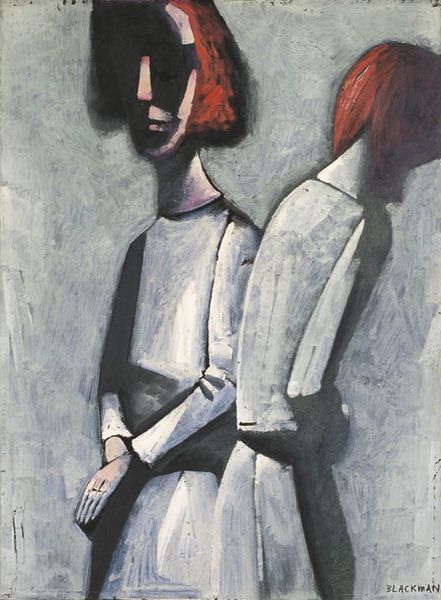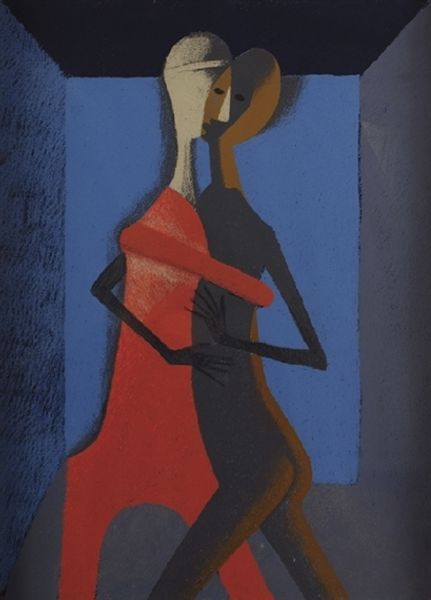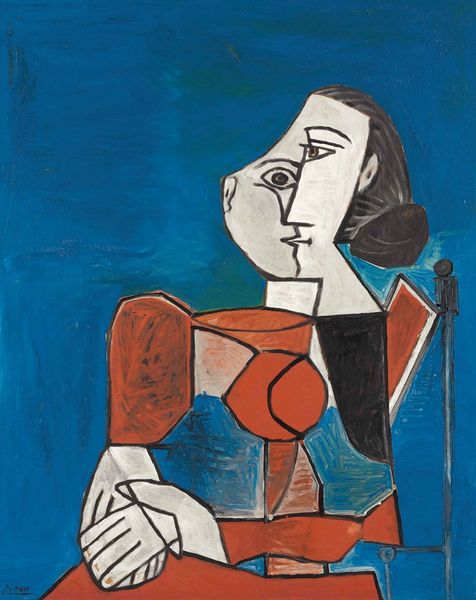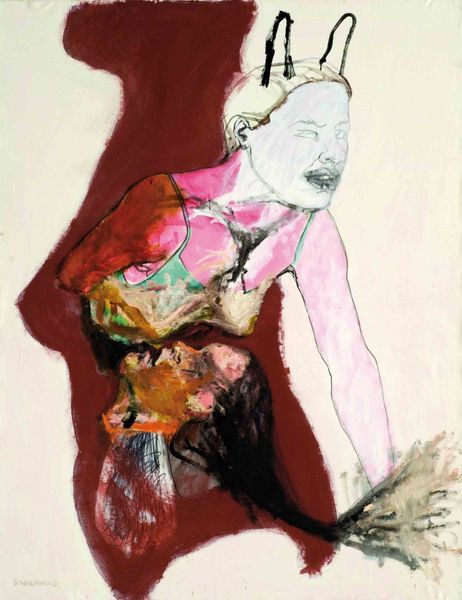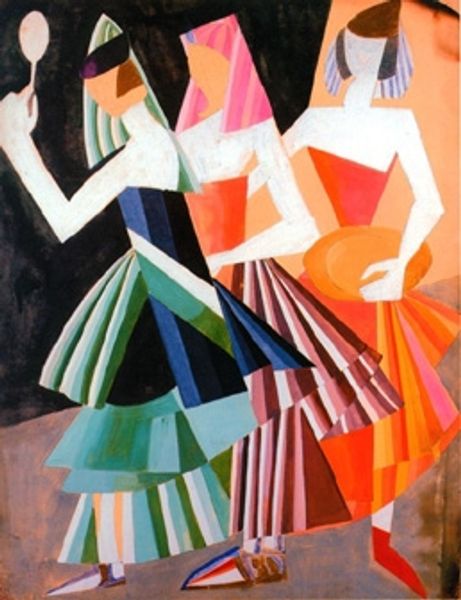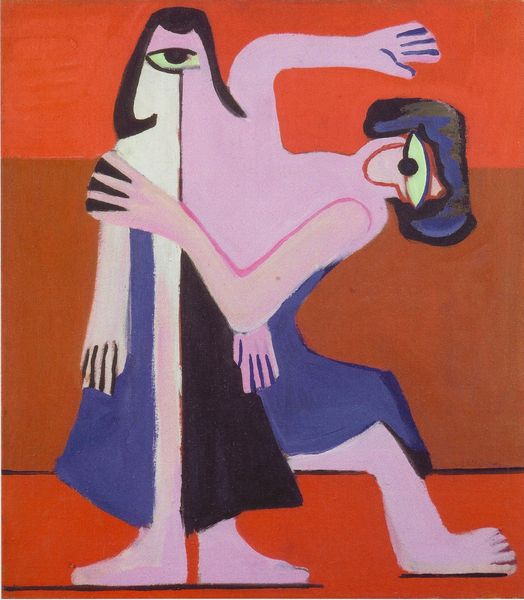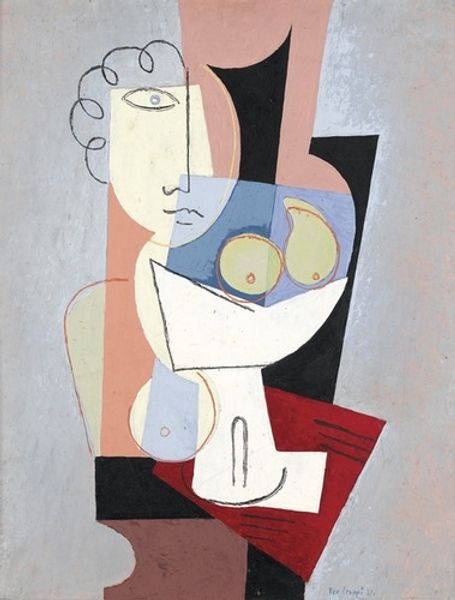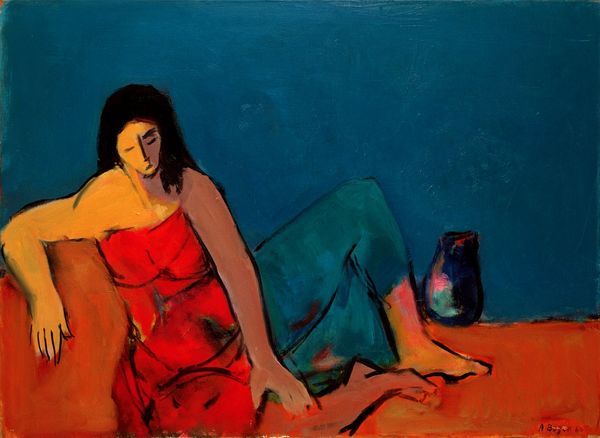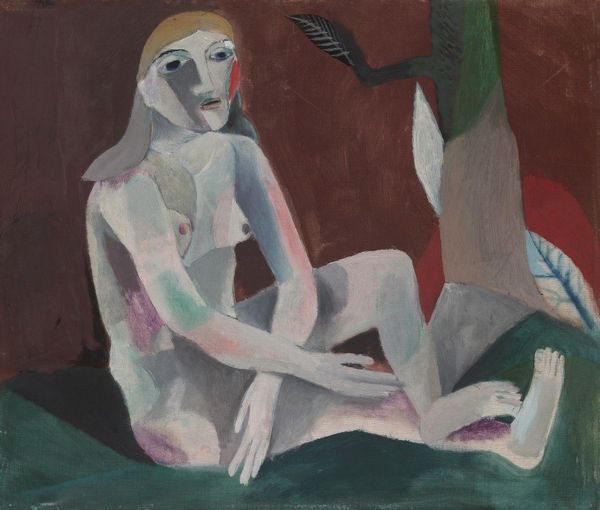
painting, oil-paint
#
portrait
#
painting
#
oil-paint
#
figuration
#
oil painting
#
portrait art
#
modernism
Copyright: Charles Blackman,Fair Use
Curator: Immediately, I'm struck by the emotional distance in this scene. It feels both intimate and isolating at once. Editor: Indeed. The piece we're observing is entitled "Black Girl with Friend." Created in 1961 by Charles Blackman, it’s an oil painting depicting two figures against a somber backdrop. Curator: The color choices—the stark whites, muted blues, and deep blacks—certainly amplify that sense of alienation. Is there some symbolic reasoning for this palette? Editor: One might say that the contrasting colors used serve as a way of drawing a viewer's eyes toward certain visual focal point. However, Blackman was concerned with themes of alienation and societal disconnection within modern life. This piece speaks to the struggles of marginalized populations in mid-20th century Australia and a specific portraiture of femininity. Curator: So the flower and red hat may stand for a memory or representation of beauty—however out of reach, since their hands are empty and they are posed stiffly with few curves? It feels like there is a message about a certain stage of a life that lacks dynamism or vigor, especially in a darker climate like the color palette here represents. Editor: You're making interesting connection! The placement of each individual against that bleak backdrop might represent both physical and existential space; and the distance as a physical interpretation of the challenges of a shared female life. I also would encourage viewers to note the importance of form, and what form gives us through emotion and what it communicates to each observer. Curator: Form, certainly, shapes our interpretations here. Though on the surface the piece suggests alienation, when considering all artistic attributes of "Black Girl with Friend," it gives space to interpret it for various levels of individual experience, in all its diversity and even conflict. What about you? What kind of symbol do you think this artwork brings? Editor: Considering the artist, subject, and date, and its exploration of color as representation for hope versus hardship—I think ultimately it stands as testament to the resilience embedded within community bonds and in women support each other with a warm presence.
Comments
No comments
Be the first to comment and join the conversation on the ultimate creative platform.
